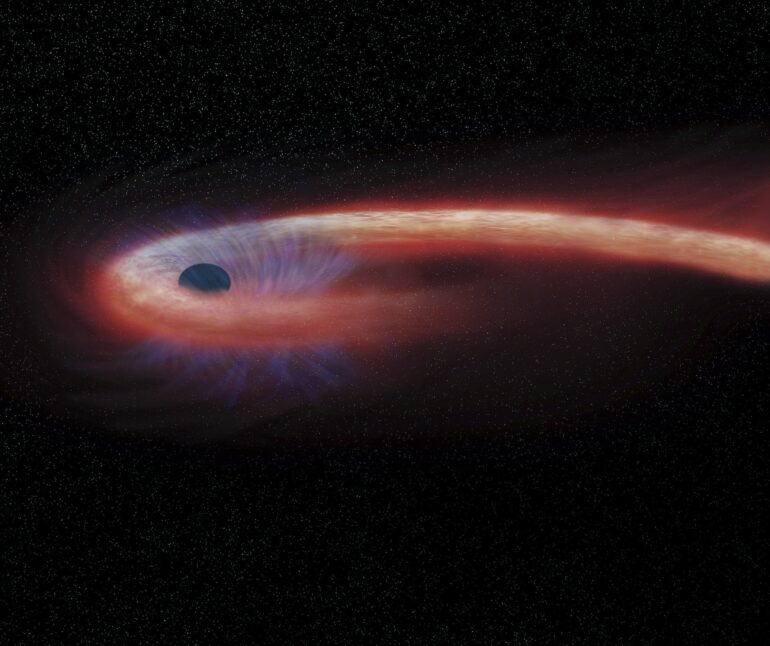
Curious Kids is a series for children of all ages. If you have a question you’d like an expert to answer, send it to [email protected].
Why are there small and big black holes? Also, why are some black holes invisible and others have white outlines? – Sedra and Humaid, Abu Dhabi, United Arab Emirates
Black holes are dense astronomical objects with gravity so strong that nothing, not even light, can escape. Anything that crosses the boundary of a black hole’s gravitational influence, called the event horizon, will fall into the black hole. Inside this deep, dense pit, it is never to be seen again.
Black holes litter the universe. Some smaller black holes are sprinkled randomly throughout galaxies like our Milky Way. Other gigantic ones, called “supermassive” black holes, lie at the centers of galaxies. Those can weigh anywhere between a million to a billion times the mass of our Sun. So you might be wondering: How can astronomers possibly see something so dark and so big?
I am an astronomer who studies the very first supermassive black holes that formed in our universe. I want to understand how black holes form and what kinds of astrophysical neighborhoods they grow up in.
Types of black holes
Let’s talk about how black holes begin their lives. Two famous scientists, Albert Einstein and Karl Schwarzchild, first pitched the idea of a black hole. They thought that when a large star dies, its core might shrink and shrink until it collapses under its own weight. This is what we astronomers call a “stellar mass black hole,” which is just another way of saying it’s comparatively very small.
Stellar mass black holes are only a few times bigger than our Sun. Supermassive black holes are more of a mystery, though. They are many millions of times heavier than our Sun, and they are packed into a small area that’s about the size of our solar system. Some scientists think supermassive black holes might form by many stars colliding and collapsing at once, while others think they might have already started growing several billion years ago.
Stars at the center of the Milky Way are orbiting around an invisible object, a supermassive black hole, like planets orbit around the Sun. Andrea Ghez/UCLA/W.M. Keck Observatory.
Growing black holes
What do black holes look like? Most of the time, they are not actively growing, so they are invisible. But we can tell they’re there because stars can still orbit around them, just like Earth around the Sun.
When something is orbiting an invisible object at high speeds, scientists know there must be a massive black hole in the middle. This is the case for the closest supermassive black hole to us, which lies at the center of the Milky Way – safely millions of miles away from you.
Meanwhile, when a hungry black hole is eating up gas in a galaxy, it heats…
